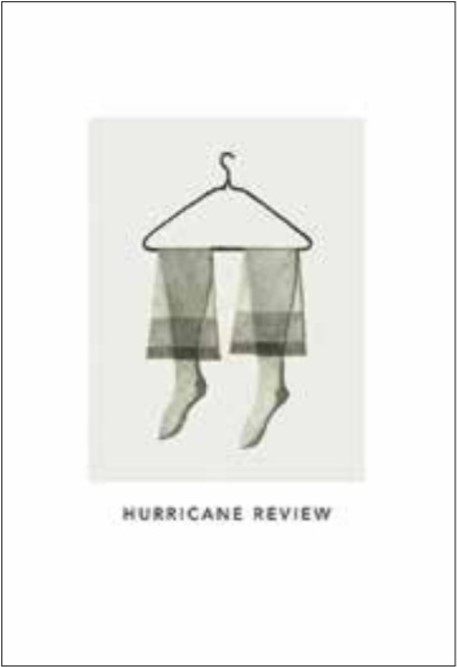Student editors help renowned poets shine
By Sarah Richards
Hurricane Review, Pensacola State College’s national, annual literary arts journal, made it s dazzling debut No v. 30th, in the Anna Lamar Switzer building.
Jamey Jones, Northwest Florida Poet Laureate and Literature professor, along with the rest of the Hurricane staff, decided to go the minimalist route, with a George Schneeman cover, a recurring theme of the empty hanger threaded throughout. The journal included poets such as Ron Padgett, a Pulitzer Prize-nominated poet, Anne Waldman (who held a poetry workshop and reading this past spring at PSC), and Eileen Myles (who will be visiting PSC in Feb. 2018).
The project was a collaboration of graphic designer, Bara’ah Jaraiseh, over vending machine cola in the conference room late nights, and student editors, Sarah Richards, Georgana Hess, Jasmine Joiner, and Tiffany Bowers, who met afternoons in the Literary Roundtable room.
As the graying winter sun set, the group would be reading aloud, coffee-house style, having debates about the functionality of the semicolon, the clarity of the Oxford comma, and the proper use of the em dash.
There was googling for the proper spellings of proper nouns, wondering what tollogollo meant, and making sure the page numbers and titles matched up with the table of contents. There were also author bios to consider.
“Once this fall semester started…it [the collaborative process of putting the journal together] had a momentum of its own,” Jones says.
When it comes to poetry, everyone has a style, and to capitalize or not capitalize was often the question. Joiner, at one point, eyeing a long (but grammatically-correct sentence), asked Jones what he’d say if she used such a lengthy sentence in a paper, he replied, with a wry smile, “I’d be impressed.”
Over red pens and green paper, it was starting to look a lot like Christmas. There was a lot of comparing the original submissions with the pre-proofs, some of which were typed on a typewriter, so part of the work was contacting the authors to ask, “Was there supposed to be a comma here?”
Jaraiseh, with her eye for graphic design and photography, said, “When I started working on it about a year ago I had no idea what to really expect, I was thinking about the layout and design a lot more than the poetry itself because I came from only a graphic design background and honestly never read a lot of poetry before this.
Once design elements were selected for the issue, I started to focus more on poetry and editing and I started to really think about all these great poets and the content we have in this issue and grew to love poetry through this process.
I was a photographer before I was a graphic designer and I always seemed to want to tell a story with my photos, I’m getting back to taking photos for me instead of as a job and I’m excited that I have a new element [poetry] to add to my artwork. I have a whole new perspective from working on Hurricane Review and I’m so excited I got that opportunity.”
Jones says of Jaraiseh, who laid out the book, “Not only is she incredibly talented, but she’s an artist. And that can’t be said for everybody.”

Bara’ah Jaraiseh, Georgana Hess, Jamey Jones, Sarah Richards, and Jasmine Joiner glam it up at the Hurricane Review release party.
Most of the Hurricane staff had done work for or was part of The Corsair, so creativity was in their DNA, and attention to detail, their mettle.
On what being such an integral part of the journal means to him, Jones says, “It’s very meaningful…It felt serendipitous to be a student editor of Half Tones to Jubilee (Half Tones was the original title of the journal).
“Being asked to be faculty editor sixteen years later…it’s a sign that I’m where I need to be.” On being a part of the project: “It was a great joy… we’re all there because we want to be there.”
Hurricane Review caught the attention of the Pensacola News Journal, getting more than a full-page write up in the “Characters” section, a meeting in which Hess made the case that even those who don’t think they like poetry, if they turn on their radio and listen to music, “That’s poetry.”
At the reception, the all-female staff (or, as Hess likes to playfully call themselves, “Jamey’s Angels”), were elegant in shades of black, white, red, and magenta—reminiscent of the journal’s cover.
The reception was divided into three parts: In-person readings, which included readings by Felicia Gail, Joel Dailey, Fred Long, and Scott Satterwhite, with subjects ranging from the absurd to the current political climate (which may be synonymous).
Ian Be performed his music, which served as an intermission. The event finished up with videos of Barbara Henning, Eric Alter, Juan Morales, Edmund Berrigan, John High, Laynie Browne, and Uche Nduka, making their words come alive.
The student editors also participated in reading a piece from the journal they had selected themselves.
Unlike The Kilgore Review, which is solely furnished with student submissions, Hurricane Review is for “any writer at any level—Pulitzer Prize nominee or freshman at Pensacola State College,” Jones said.
If students want to get a better idea of what Hurricane Review publishes, it would be good to pick up a copy of the new issue (as well as back issues) to better their chances.
Hurricane Review is currently taking submissions for the 2018 edition.


